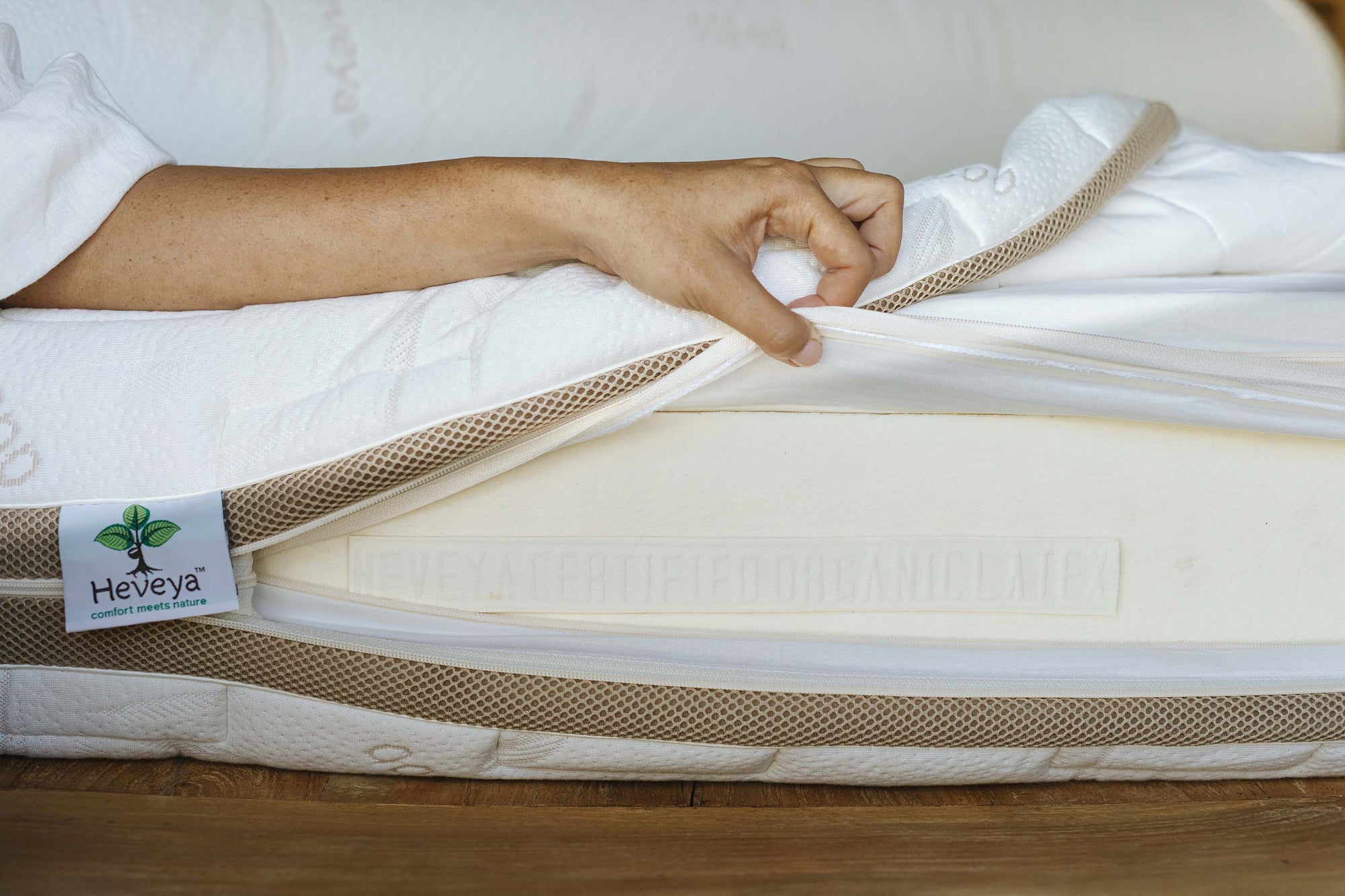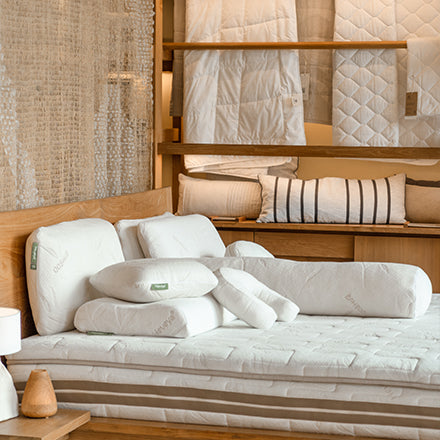Latex is an all-natural product which comes from the sap of the rubber tree, Hevea brasiliensis. Latex looks very different before it is processed into products such as mattresses. Here’s how the milky-white liquid sap is made into the most comfortable mattress out there.
It starts with the rubber tree
The rubber tree, Hevea brasiliensis, thrives in tropical areas. This tree produces a white milky sap, known as rubber sap or latex sap. This sap can be tapped and harvested from the tree, and subsequently used to make latex products. Most of the plantations which are responsible for the commercial production of latex are found in Southeast Asia.
Rubber plantations are managed carefully to ensure consistent growth of new trees for output. This is important, because it can take around six years for a rubber tree to grow large enough to have its sap harvested. Note that each tree can live for 100 years.
To tap a rubber tree, a collector will make a thin diagonal cut to remove a small piece of bark. This accesses the tubes in the trunk carrying the sap, and allows the latex sap to flow out and be collected in a bucket. The flow will stop after about 6 hours, and the tree may be tapped again with a new cut the next day. With carefully-made cuts, tapping its sap does not harm the growth of the tree.

How much latex does it take to make a mattress?
An immense amount of latex is needed to make a mattress. However, remember that latex can be tapped without destroying the tree or creating pollution, unlike other types of mattresses. To make a queen size latex mattress, it will take a whole day's output of 12 acres of rubber trees.
But instead of harming the environment, this helps it: the same number of trees tapped for a queen size mattress will over the course of one year remove 143 tons of carbon dioxide from the air. Furthermore, this same 12 acres of rubber trees will keep 8 rubber tappers employed too, creating important jobs in areas where jobs may be scarce.
In other words, when you purchase a latex mattress, you are choosing to purchase a sustainable and environmentally-friendly product that also supports local industries and communities.
How is the liquid latex made into a mattress?
It seems strange at first to think that the milky sap of the rubber tree can be turned into a mattress! Yet it can be done. This step is called processing, and can be done via several methods. In all methods, the liquid latex sap is first mixed with small amounts of other ingredients which will later help the latex solidify.
Dunlop method In the Dunlop method, the liquid latex formulation is first mixed, whipping air into the mixture to form a foam. This foamy mix is placed into a shaped mould, and is “baked” into a solid block inside a special oven. The foam block is then transferred to the washing station, where any small amounts of residual liquid latex or solidifying agents are washed away. The solid latex foam is then dried by hot air and is ready for use.
With the Dunlop method, the latex foam may be easily created in any shape that is needed by preparing the necessary mould. For example a king size mattress may be prepared in one King-size mould, and then sent through the various stages in processing.
Talalay method The Talalay method is newer than the Dunlop method and produces a slightly different texture of latex. With the Talalay method, the liquid latex formulation is transferred into a shaped mould and sealed shut. A vacuum is then applied within the mould.
The purpose of the vacuum is to disperse the latex evenly throughout the mould. After that, it is flash frozen, and immediately afterward it is flash heated so that it will permanently solidify. After cooling, the solid latex block is removed from the mould and is ready for use.
Each mattress produced by the Talalay method undergoes all steps of processing, from mixing to flash freezing and heating, without leaving its mould. Creating these special moulds for each size of mattress is prohibitively expensive, especially for larger sizes. Therefore, the Talalay method is rarely used to produce very large blocks of latex. More often, mattresses are created from smaller blocks of latex glued together. Locations of the seams may vary, and this is something to take into account.
How our latex mattresses are made
Heveya® latex mattresses are made using the Dunlop process.

Manufacturing of the Heveya® latex core is fully automated. Firstly, the latex formulation is mixed continuously with compressed air in order to create foam. Once the latex foam has the right density, minuscule air bubbles are mixed into it to form an open-cell structure. This openness allows air circulation through a latex mattress core.
Once the latex foam is ready, a robot spreads it evenly into a mould. These filled moulds are vulcanized, ie “baked”. The moulds’ design incorporates pin cores to define various comfort zones in the mattress. For example, bigger pins make bigger holes in the latex, and the mattress will feel softer in that area. The adapted firmness of the different zones ensures perfect lying comfort and top-to-toe support.
After the vulcanization step, the fresh latex core is taken out of the mould and thoroughly washed and dried. Each mattress is individually tested for firmness and visually inspected for any imperfections. Once the mattress has been rigorously checked for quality, it goes to the automated warehouse where it is seal-packed and stored. Soon after that, it is shipped to customers around the world.
Our latex mattresses are certified by multiple independent organizations and carry certificates of quality. These certificates give customers and users the guarantee that every latex mattress is synonymous with exceptional comfort and safety.
Conclusion
Latex mattresses are a natural product, made from the sap of the rubber tree into a comfortable block of latex foam. When you buy a 100% natural latex mattress, you are helping the environment by supporting the growth of rubber tree plantations, and sustaining local communities and the employment of numerous rubber tappers.
A natural latex mattress goes above and beyond the delicious comfort you feel when you lie down. It's also about the satisfaction of knowing you're purchasing a responsible and sustainable product.
Read more: Why we use only 100% natural organic latex
A version of this article first appeared on the European Bedding Singapore website.



